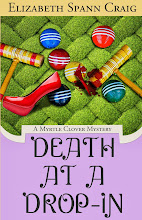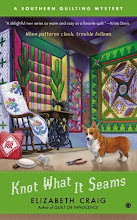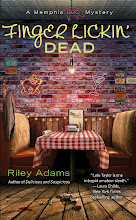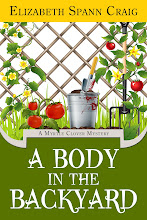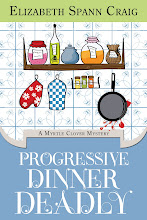 As a fantasy author, creating the worlds my characters inhabit is half the fun. But it can also be a lot of work, because there’s so much you need to know to create a whole world – and most of it never even makes it into the book. To make this easier on myself, I like to use real places as a foundation and build my worlds from there.
As a fantasy author, creating the worlds my characters inhabit is half the fun. But it can also be a lot of work, because there’s so much you need to know to create a whole world – and most of it never even makes it into the book. To make this easier on myself, I like to use real places as a foundation and build my worlds from there.
For my adventure fantasy, The Shifter, I wanted to create a lakeside Venice, so I started researching the world’s biggest lakes. Lake Superior had interesting possibilities, but it was pretty deep and cold, and anyone building a city on a lake would probably need it to be shallow. Lake Tanganyika was an option, but it was too long and skinny for what I had in mind. I wanted my city to have a sense of isolation that only a vast expanse of water could create. Then I found Lake Victoria in Africa. Round, shallow, interesting geographic location—it was perfect.
Now that I had my lake, I researched what plants grew in that area, what people ate, and what kind of animals there were. All the little details that make a world come to life, and things that I could easily grab when I needed a detail for a scene. Fishing would obviously be important, so that would be a large industry and where most of Nya’s (my protagonist) odd jobs would come from. In a small city riddled with canals, vehicles would takes up a lot of space, so most people would probably walk. Carriages and horses would be restricted to the very rich or powerful. Instead, boats would likely be used to carry people and goods from one side of the isle to the other. With just a little research I could already see my world coming to life.
 I also found some fun real life details I could use. Like how water hyacinths are a problem around Lake Victoria, because they grow so fast and get caught in boat propellers. This translated into a problem my city of Geveg could have, with plants clogging the canals and boat owners needing someone to yank them out by hand. Sounded like a risky job to me, so why not make it even riskier by adding crocodiles to the mix? People desperate for a job would risk being eaten to pull a few plants now and then. And since I knew Nya was going to be poor, this could be something she might consider doing. (And it turned out to have devastating consequence in the third book, Darkfall)
I also found some fun real life details I could use. Like how water hyacinths are a problem around Lake Victoria, because they grow so fast and get caught in boat propellers. This translated into a problem my city of Geveg could have, with plants clogging the canals and boat owners needing someone to yank them out by hand. Sounded like a risky job to me, so why not make it even riskier by adding crocodiles to the mix? People desperate for a job would risk being eaten to pull a few plants now and then. And since I knew Nya was going to be poor, this could be something she might consider doing. (And it turned out to have devastating consequence in the third book, Darkfall)
Once I had a basic world foundation, it was time to think about the technology. I wanted my people to be advanced enough to have certain things like clocks and glass, but still maintain a fantasy feel (which can't have too much science or it starts to feel like science fiction). I picked 16th century Italy, giving the world a Renaissance undertone. Education was available, books existed, commerce was more developed, but it was still an old-fashioned world. I cross-referenced this with the natural resources of my African lake climate, so I could see what technologies would have developed and which wouldn't have. For example, if there's no access to gold, then you don't have gold smithing or gold jewelry.
Then it was on to style. (This is where the artist in me came into play) What would the art look like? How would these people decorate? Again, I went back to my base influences. The African lake and the Italian city. I decided to mix the two and go for a Byzantine feel. Arches, tiles, mosaics, beads, bright colors and patterns. Textures.
And of course, every culture has a religion (if not several). I decided to give my world a spiritual side, but not one that required the deities to actively participate in the lives of the people. Something that guided morality and faith, but didn't dominate it. Saints popped into my mind (couldn't even tell you what inspired that) and since the story involved sisters, I wanted to make all the Saints female and sisters. Alliteration naturally took me to the Seven Sisters, and that worked into the seven deadly sins. My Saints became the opposite, and represented the seven virtues. Nya’s patron Saint is Saint Saea, Sister of Compassion. That really fits Nya since she gets into the trouble she does by being compassionate.
Slowly, my world took shape, and it was time to start naming things. I used an African lake as a world foundation, so I thought it would fun to create names from African words. I chose Geveg as my city’s name, because geveg means struggle, which suits a city struggling under the occupation of enemy forces (which it is). That enemy is called Baseer, which is a derivative of beseer or hurt, because they’re the ones doing the hurting. Pynvium, the magical metal in my story, comes from pyn, the word for pain. Few people are ever going to know the meanings when they read the book, but having a little secret makes it more fun for me. And since Afrikaans is close to Dutch, I’ve actually had readers e-mail me asking if a certain name really does mean something in particular. Many of my names have hidden meanings in them, and you can get a hint about those characters if you happen to know what their name means.
Once you name something it’s yours, so I had my world and my story and I was ready to write it. And figure out what kinds of troubles I could cause poor little Nya in her fun little world. Because for me, the other half of the fun is seeing how my characters get out of the messes I put them in.
*********************
 Janice Hardy always wondered about the darker side of healing. For her fantasy trilogy THE HEALING WARS, she tapped into her own dark side to create a world where healing was dangerous, and those with the best intentions often made the worst choices. Her books include THE SHIFTER, and BLUE FIRE. DARKFALL, the final book of the trilogy, is due out October 4, 2011.
Janice Hardy always wondered about the darker side of healing. For her fantasy trilogy THE HEALING WARS, she tapped into her own dark side to create a world where healing was dangerous, and those with the best intentions often made the worst choices. Her books include THE SHIFTER, and BLUE FIRE. DARKFALL, the final book of the trilogy, is due out October 4, 2011.
She lives in Georgia with her husband, three cats and one very nervous freshwater eel. You can visit her online at www.janicehardy.com, chat with her about writing on her blog, The Other Side of the Story (http://blog.janicehardy.com/), or find her on Twitter @Janice_Hardy.





